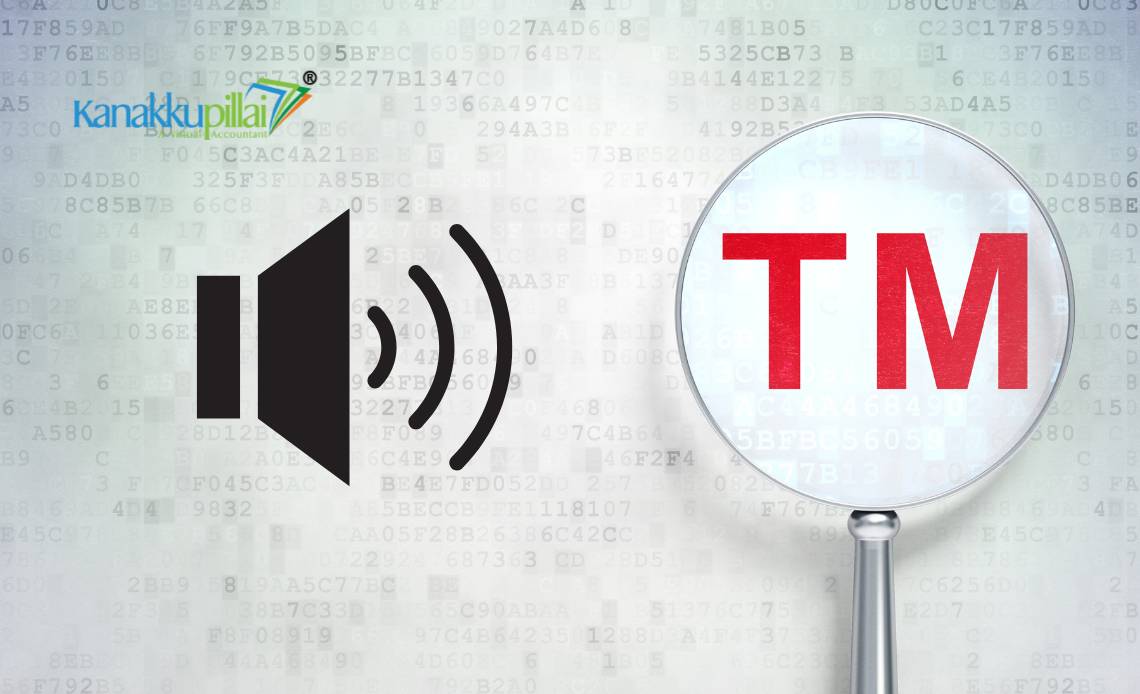Imagine hearing the famous Nokia tune, the Intel jingle, or the Lion’s Roar of MGM, without even seeing the brand name, your brain immediately knows who they belong to. In today’s era, companies are thriving in finding new ways to advertise themselves and do sensory branding. Companies are using different techniques to build emotional connections with consumers to attract more users. The advertisement is not just limited to visual representation; it has extended to play with memories of human beings in the form of stimulation. Studies by Harvard Business Review reveal that audio branding can increase brand recognition by up to 96%. When people repeatedly hear a distinctive sound in ads, apps, or even payment confirmations, they begin to associate it with reliability and familiarity. That’s where sound trademark steps in. It is a legal tool to protect the unique audio identity of your brand. It gives the owner the exclusive right to use their sound across platforms.
In this blog, we will explain in detail what a sound trademark is, its advantages, eligibility, required documents, and the entire process of trademarking sound in India.
What is a Sound Trademark?
A sound trademark is a unique sound or audio clip that distinguishes the goods or services of one entity from another. Just like a logo or brand name, it helps customers instantly recognize the source of a product or service. These sounds can be musical notes, jingles, tunes, or even specific vocal sounds.
Sound Vs Other Types of Non-conventional Trade Marks in India
| Type of Trademark | Elements | Example |
| Sound Mark | Audio clip | ICICI Bank jingle |
| Shape Mark | 3D design | Coca-Cola bottle |
| Colour Mark | Specific hue | Cadbury purple |
| Smell Mark | Aroma/scent | Difficult in India |
Advantages of Sound Trademark
Trademarking a sound provides you the following benefits:
- Instant Recognition, as customers can identify your brand by sound alone.
- Emotional Connection, since sounds evoke emotions and strengthen brand identity.
- Brand Differentiation, helping you stand out in crowded markets.
- Legal Protection, preventing others from copying or imitating your audio identity.
- Valuable IP Asset, enhancing brand value, especially for multimedia and digital-first companies.
- Better Presence in Digital Platforms: Audio plays a key role in mobile apps, gaming, and smart devices.
- Boosts Marketing ROI since recognizable sound cues improve ad recall and engagement.
- Consistency Across Platforms, creating a uniform brand experience across radio, TV, YouTube, and apps.
- Triggers Instant Brand Recall, especially in short-form content where visuals are limited.
- Exclusive Rights grant you the sole right to use the sound across specific classes of goods/services.
- Completes Your Sonic Branding Strategy, adding another sensory layer to your visual identity.
- Competitive Advantage, especially in sectors where audio interaction is key, such as fintech, OTT, and mobile tech.
🔊 Popular Sound Trademarks in India
- Yahoo! Yodel
- Nokia Tune
- NSE Theme Sound
- ICICI Bank Jingle
- Visa Transaction Sound
- All India Radio Signature Tune
- Britannia Four-Note Jingle
- Zippo Lighter Click
- Intel Bong Sound
- Raymond’s “The Complete Man” Tune
Eligibility Criteria to Trademark a Sound in India
To register a sound as a trademark in India, the sound must meet the following conditions:
1. Distinctiveness
- The sound must be unique and capable of distinguishing your goods or services from those of others.
- Generic or commonly used sounds like a doorbell ring or alarm beep are not considered distinctive.
- It should be instantly associated with your brand in the minds of consumers.
2. Used in the Course of Trade
- The sound must be used commercially in connection with your goods or services.
- It should be played in advertisements, promotions, or packaging to identify your brand.
3. Graphical Representation
- The Trade Marks Act, 1999, requires that every trademark, including sound, must be graphically represented.
- For sound marks, you need to submit:
-
- A musical score or notation (like sheet music)
- A written description of the sound
- An MP3 file (not exceeding 30 seconds in duration)
4. Not Deceptive or Offensive
- The sound must not violate public order.
- The sound must not be against public morality.
- The sound must not be offensive or vulgar.
- The sound must not mislead consumers or suggest a false origin of a product or a service.
5. No Conflict with Existing Trademarks
- The sound must not be identical or deceptively similar to an already registered sound trademark.
- A prior trademark search is strongly recommended to avoid conflicts.
Documents Required to Trademark a Sound in India
- MP3 file with sound for a maximum of 30 seconds, high quality.
- Graphical representation of the sound such as musical notation or sonogram.
- Written description of the sound.
- Form TM-A: Trademark application form.
- Details of the applicant, such as name, address, and entity type.
- Power of Attorney (Form TM-48): If you are applying an agent or attorney.
- Proof of prior use such as advertisements, audio clips, and promotional material.
- Description of goods/services and trademark class.
- Government fee receipt
- Other supporting documents like the Certificate of Company Incorporation and Startup certificate are needed if claiming fee reduction.
Step-by-Step Process to Trademark a Sound in India
Follow the step-by-step procedure to trademark a sound in India:
1. Create a Unique and Distinct Sound
Make sure that your sound is original and uniquely tied to your brand. It must not be generic or functional, similar to an existing registered trademark, or meet the eligibility criteria.
2. Conduct a Trademark Sound Search
Even though India doesn’t have a separate sound database, you must still check for existing trademarks that may resemble your sound.
3. Prepare Documents
Prepare the afore-mentioned documents:
4. File Form TM-A with the Trade Marks Registry
You can file online via the IP India portal or offline at the appropriate regional office. Fill in:
- Applicant details
- Class of goods/services
- Clear indication that it is a sound mark
- Attach required documents and pay fees
5. Examination by Trademark Office
The Registrar will review:
- Whether the sound is distinctive and not functional
- Whether it conflicts with existing trademarks
- If the representation of the sound is graphically clear and complete
6. Respond to Objections (if any)
If there is an objection in your trademark application, you need to file a Reply within 30 days, explaining:
- How the sound is distinctive
- Evidence of usage (if any)
- Clarifications on its representation
A hearing may be scheduled by the Trademark Registrar, where you need to defend your trademark.
7. Publication in Trademark Journal
If accepted, the sound trademark is published in the Trademark Journal to invite public opposition within 4 months.
8. Handling Opposition (if raised)
If anyone files opposition, you’ll need to:
- File a counter-statement
- Submit evidence
- Appear for hearings
If there is no opposition or it is resolved in your favor, the Trademark Registry will issue a certificate.
9. Trademark Registration Certificate Issued
Your sound trademark certificate is valid for 10 years and renewable indefinitely.
Conclusion
Sound has evolved into much more than simply background noise in today’s fast-paced, digitally linked world; it is now a potent branding tool for promoting your company. Although registering a sound trademark in India may initially appear difficult, it is completely doable with the correct planning and a thorough comprehension of the procedure. Legally securing your sound is a wise decision that will add value and preserve your brand over time if it is genuinely unique and intimately related to your company identity.
From well-known companies like Yahoo! and Nokia to up-and-coming startups, audio branding is influencing how companies will interact with their clientele in the future. It’s time to provide your brand the legal protection it needs if it has a distinctive voice.
Frequently Asked Questions
1. Can any sound be trademarked in India?
No, the sound must be distinctive, non-functional, and associated with your brand. Generic sounds like a regular beep or ring, but it usually doesn’t qualify.
2. How long can the sound clip be?
The sound file should not exceed 30 seconds in length when submitted in MP3 format.
3. Is it necessary to provide a musical notation?
Yes, a graphical representation—like a musical score or sonogram—is mandatory under Indian trademark law.
4. Where do I apply for a sound trademark in India?
You can apply online via the IP India website or file a physical application at the respective Trade Marks Registry office.
5. Do I need to hire a lawyer to file a sound trademark?
It’s not mandatory, but hiring an IP lawyer or trademark agent is highly recommended for a smoother and error-free process.
6. What is the government fee for registering a sound mark?
The fee depends on the applicant type—individual/startup or company—and ranges from ₹4,500 to ₹9,000 per class.
7. How long does it take to get a sound trademark registered?
It can take anywhere from 6 months to over a year, depending on objections, opposition, or examination delays.
8. Can a foreign company register a sound trademark in India?
Yes, foreign entities can also apply for sound trademarks in India by appointing a local trademark agent or attorney.
9. How long is a sound trademark valid in India?
Once registered, it is valid for 10 years and can be renewed indefinitely every 10 years.





